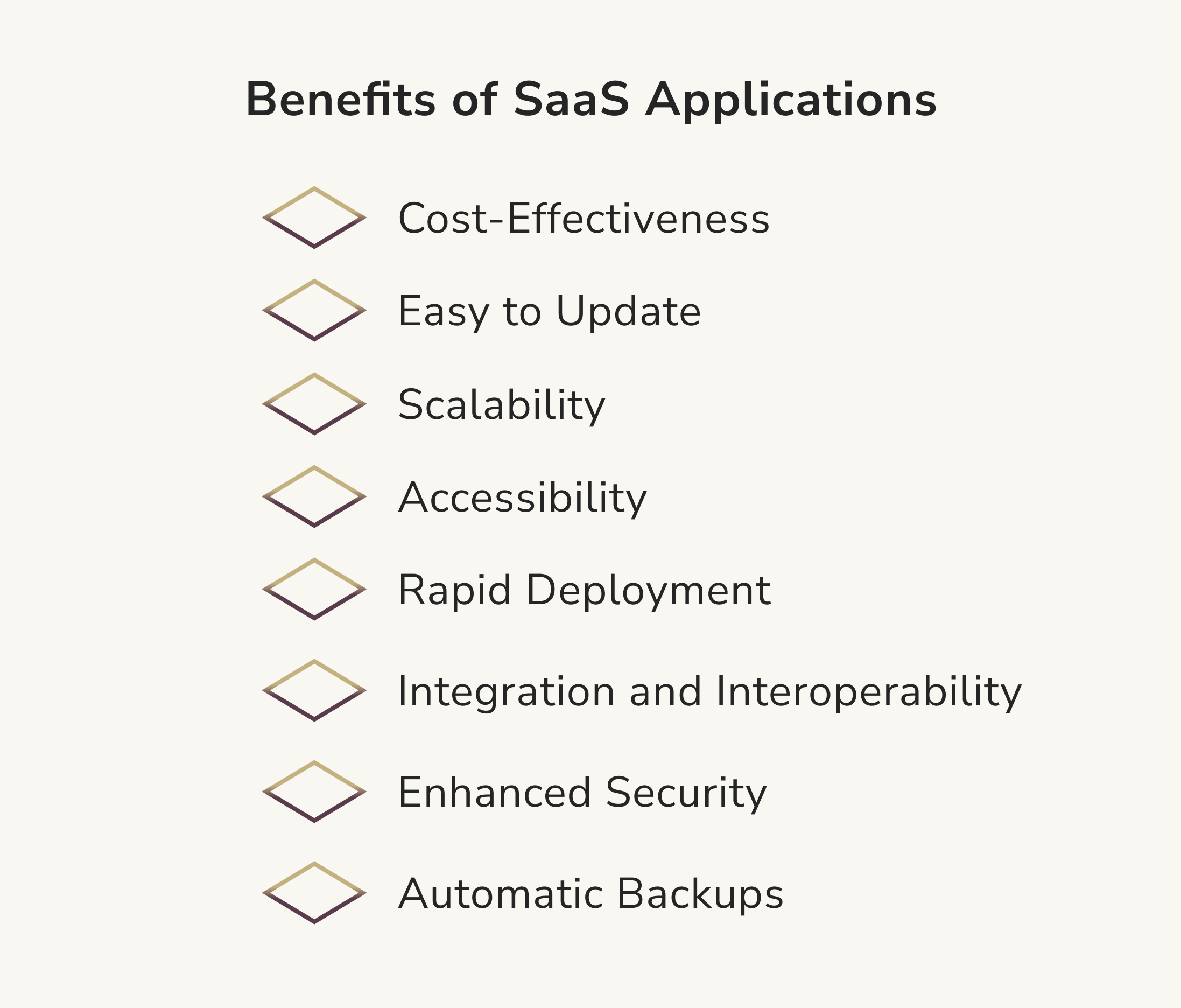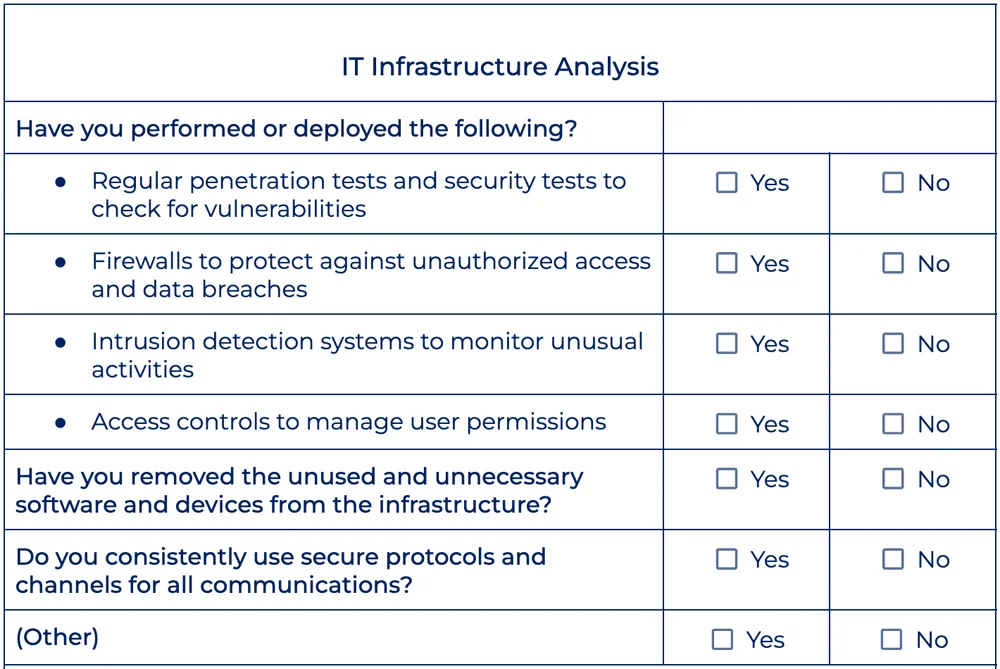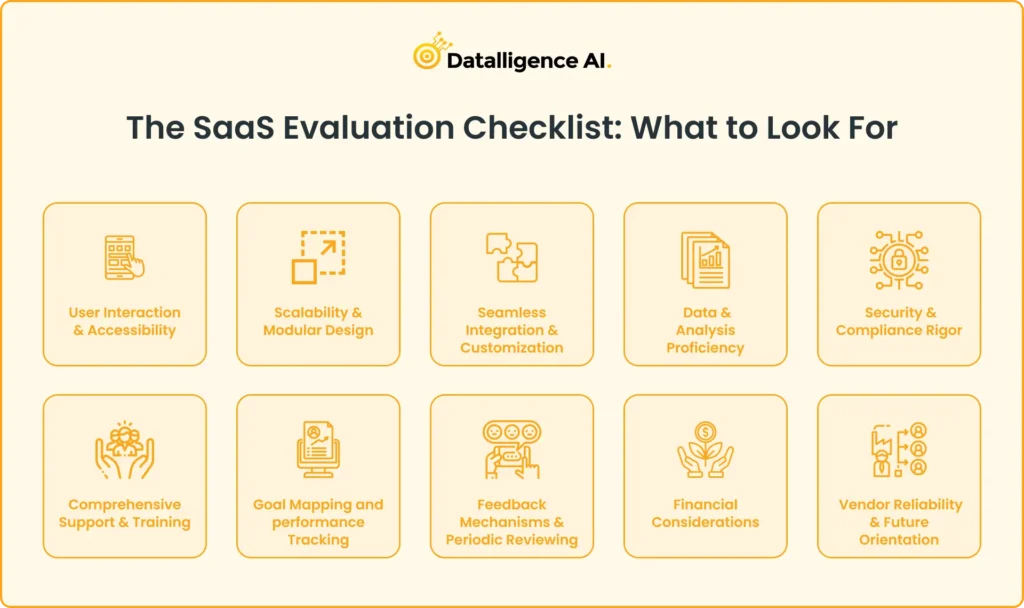Understanding the Importance of a SaaS Checklist
What is a SaaS Checklist?
A SaaS (Software as a Service) checklist is a comprehensive tool designed to guide businesses through the complex process of evaluating, selecting, and implementing cloud-based software solutions. In 2025, as the SaaS market continues to expand rapidly, this checklist serves as a crucial roadmap for organizations aiming to leverage the power of cloud computing efficiently.
At its core, a SaaS checklist is more than just a simple to-do list. It’s a strategic document that encapsulates best practices, industry standards, and company-specific requirements. This checklist ensures that no critical aspect is overlooked during the SaaS adoption journey, from initial assessment to long-term management.
Why You Need a SaaS Checklist in 2025
In the fast-paced digital landscape of 2025, a well-crafted SaaS checklist is indispensable for several reasons:
- Risk Mitigation: It helps identify potential pitfalls and security risks before they become problematic.
- Cost Efficiency: By systematically evaluating options, you can avoid costly mistakes and ensure better ROI.
- Alignment with Business Goals: The checklist keeps your SaaS strategy aligned with overarching business objectives.
- Scalability Planning: It prompts consideration of future growth, ensuring selected solutions can scale with your business.
- Compliance Assurance: In an era of stringent data regulations, the checklist helps maintain compliance with industry standards.
According to a recent study by Gartner, organizations that implement a structured SaaS selection process are 63% more likely to report satisfaction with their chosen solutions. This statistic underscores the value of a well-designed SaaS checklist in today’s tech-driven business environment.

Key Components of a SaaS Checklist
1. Define Your Business Needs
The foundation of any successful SaaS implementation begins with a clear understanding of your organization’s specific needs. This step involves more than just listing desired features; it requires a deep dive into your business processes and future aspirations.
Identifying Core Objectives
Start by conducting a thorough analysis of your current operations. Engage with key stakeholders across departments to gather insights on pain points and areas for improvement. Ask questions like:
- What are the primary challenges we’re facing with our current systems?
- How can SaaS solutions help us achieve our strategic goals?
- What specific outcomes are we hoping to achieve through SaaS adoption?
For instance, a marketing team might prioritize a SaaS solution that offers advanced analytics and automation capabilities, while an HR department might focus on tools that streamline recruitment and employee onboarding processes.
Aligning with Strategic Goals
Ensure that your SaaS checklist reflects your company’s long-term vision. This alignment is crucial for several reasons:
- It prevents the adoption of solutions that might become obsolete as your business evolves.
- It helps in prioritizing features that contribute directly to your strategic objectives.
- It facilitates better resource allocation by focusing on SaaS solutions that offer the highest strategic value.
Consider creating a matrix that maps potential SaaS solutions against your key business goals for the next 3-5 years. This visual aid can be invaluable in making informed decisions during the selection process.
2. Evaluate Features and Benefits
Once you’ve clarified your needs, the next step is to assess the features and benefits offered by various SaaS providers. This evaluation should be thorough and objective, focusing on how well each solution meets your specific requirements.
Must-Have Features
Create a comprehensive list of essential features that your SaaS solution must include. These could range from basic functionalities to more advanced capabilities. Some common must-have features in 2025 include:
- AI-powered analytics and predictive insights
- Robust API integration capabilities
- Advanced security measures, including biometric authentication
- Customizable user interfaces and workflows
- Real-time collaboration tools
- Mobile accessibility with full feature parity
Remember, the importance of features can vary depending on your industry and specific use case. For example, a healthcare provider might prioritize HIPAA compliance features, while a global corporation might focus on multi-language support and localization options.
Comparing Vendors
Conduct a thorough comparison of different SaaS vendors. This process should involve:
- Reviewing case studies and success stories from businesses similar to yours
- Analyzing customer reviews and ratings on reputable platforms
- Checking the vendor’s track record for reliability and uptime
- Evaluating the vendor’s roadmap for future feature development
Consider using a scoring system to objectively compare vendors across various criteria. This approach can help in making a data-driven decision that aligns with your checklist priorities.
For an in-depth look at SaaS vendor comparison methodologies, check out this informative video by TechInsights: SaaS Vendor Comparison Techniques for 2025.
3. Cost Analysis
A comprehensive cost analysis is crucial in the SaaS selection process. It’s not just about finding the cheapest option, but rather understanding the total cost of ownership (TCO) and the value delivered.
Understanding Pricing Models
SaaS pricing models have evolved significantly by 2025. Common models include:
- Subscription-based: Fixed monthly or annual fees, often with tiered pricing based on features or user numbers.
- Pay-per-use: Charges based on actual usage, which can be beneficial for fluctuating needs.
- Value-based pricing: Fees tied to the measurable value or ROI the software delivers.
- Hybrid models: Combinations of the above, tailored to specific industry needs.
When evaluating pricing models, consider factors like:
- Scalability: How will costs change as your business grows?
- Hidden fees: Are there additional costs for support, training, or integrations?
- Contract flexibility: Can you adjust your plan easily if needs change?
Budget Constraints
While it’s important to stay within budget, remember that the cheapest option isn’t always the most cost-effective in the long run. Consider the following:
- ROI potential: How will the SaaS solution impact your bottom line?
- Opportunity costs: What are the costs of not implementing a more advanced solution?
- Resource savings: Will the solution reduce the need for in-house IT support or other resources?
Use tools like ROI calculators provided by vendors or create your own based on your specific use case. This can help justify the investment to stakeholders and ensure you’re making a financially sound decision.
Implementing the SaaS Checklist
Step-by-Step Deployment Strategy
Implementing your SaaS checklist effectively is crucial for a smooth transition and adoption process. Here’s a structured approach to deployment:
Pilot Programs
Before a full-scale rollout, initiate pilot programs to test the SaaS solution in a controlled environment. This approach offers several benefits:
- It allows you to identify and address potential issues without affecting the entire organization.
- Provides valuable insights into user experience and adoption challenges.
- Helps in fine-tuning the implementation strategy based on real-world feedback.
When setting up a pilot program:
- Select a diverse group of users from different departments and skill levels.
- Set clear objectives and success metrics for the pilot.
- Provide comprehensive training and support to pilot participants.
- Establish a feedback loop for continuous improvement.
Gathering Feedback
Collecting and analyzing feedback is crucial for refining your SaaS implementation strategy. Consider these methods:
- Regular surveys to gauge user satisfaction and identify pain points.
- Focus groups to dive deeper into specific aspects of the SaaS solution.
- Analytics tools to track usage patterns and feature adoption rates.
- One-on-one interviews with key stakeholders to understand their perspectives.
Use this feedback to:
- Adjust your training and onboarding processes.
- Customize the SaaS solution to better fit your organizational needs.
- Identify areas where additional support or resources are needed.
- Refine your SaaS checklist for future implementations.
Continuous Monitoring and Evaluation
The implementation of a SaaS solution is an ongoing process. Establish a system for continuous monitoring and evaluation to ensure long-term success:
- Set up key performance indicators (KPIs) to measure the impact of the SaaS solution on business outcomes.
- Regularly review usage statistics and user feedback to identify trends and areas for improvement.
- Stay informed about updates and new features from the SaaS provider to maximize the value of your investment.
- Conduct periodic reassessments of the SaaS solution against your evolving business needs.
Remember, the SaaS landscape is constantly evolving. What works today might need adjustment tomorrow. Be prepared to adapt your strategy as new technologies and business requirements emerge.

Advanced Considerations for Your SaaS Checklist
Data Integration and Migration
In 2025, seamless data integration and migration are critical components of any SaaS implementation. Your checklist should include a comprehensive plan for:
- Assessing data compatibility between existing systems and the new SaaS solution.
- Cleaning and preparing data for migration to ensure accuracy and completeness.
- Implementing robust ETL (Extract, Transform, Load) processes.
- Ensuring data integrity and security during the migration process.
Consider partnering with data integration specialists or utilizing advanced AI-driven data mapping tools to streamline this process. The goal is to ensure that your historical data seamlessly integrates with the new system, providing continuity and preserving valuable insights.
Customization and Scalability
The ability to customize and scale your SaaS solution is crucial for long-term success. Your checklist should evaluate:
- The extent of customization options available without requiring complex coding.
- Scalability features that allow the solution to grow with your business.
- The availability of APIs and webhooks for integrating with other tools and creating custom workflows.
- The vendor’s track record in adapting to emerging technologies and market trends.
Look for SaaS providers that offer flexible platforms capable of evolving with your business needs. This adaptability ensures that your investment remains relevant and valuable as your organization grows and changes.
Compliance and Data Governance
In an era of increasingly stringent data regulations, your SaaS checklist must prioritize compliance and data governance. Key considerations include:
- Ensuring the SaaS provider complies with relevant industry standards (e.g., GDPR, CCPA, HIPAA).
- Reviewing the provider’s data handling and privacy policies.
- Assessing the geographical location of data centers and its implications on data sovereignty.
- Evaluating the provider’s audit and reporting capabilities for compliance purposes.
Engage with your legal and compliance teams early in the process to ensure all regulatory requirements are met. This proactive approach can prevent costly legal issues and data breaches down the line.
Future-Proofing Your SaaS Strategy
Embracing Emerging Technologies
As we look towards the future, your SaaS checklist should consider how emerging technologies can enhance your chosen solutions. Key areas to watch include:
- Artificial Intelligence and Machine Learning: Look for SaaS solutions that incorporate AI for predictive analytics, automation, and personalized user experiences.
- Internet of Things (IoT) Integration: Consider how your SaaS tools can leverage IoT data for enhanced insights and operational efficiency.
- Blockchain for Enhanced Security: Evaluate SaaS providers that are exploring blockchain technology for improved data security and transparency.
- Edge Computing Capabilities: Assess how SaaS solutions can utilize edge computing for faster processing and reduced latency.
Stay informed about these technological advancements and how they’re being integrated into SaaS offerings. This forward-thinking approach ensures your chosen solutions remain cutting-edge and continue to provide value in the years to come.
Sustainability and Environmental Considerations
In 2025, sustainability is a key factor in business decisions, including SaaS adoption. Your checklist should include criteria for assessing the environmental impact of potential SaaS solutions:
- Evaluate the provider’s commitment to sustainable practices, such as using renewable energy for data centers.
- Consider the potential for SaaS solutions to reduce your organization’s carbon footprint through improved efficiency and reduced need for on-premises infrastructure.
- Look for providers that offer transparency in their environmental policies and practices.
By prioritizing sustainability in your SaaS selection process, you not only contribute to environmental conservation but also align your technology strategy with growing consumer and regulatory expectations for corporate responsibility.
Conclusion: Mastering Your SaaS Journey
As we navigate the complex SaaS landscape of 2025, a well-crafted SaaS checklist is your compass for making informed, strategic decisions. By meticulously addressing each aspect outlined in this guide – from initial needs assessment to future-proofing your choices – you position your organization for success in an increasingly digital world.
Remember, the SaaS checklist is not a one-time tool but an evolving document that should grow and adapt with your organization’s needs and the ever-changing technological landscape. Regularly revisit and refine your checklist to ensure it remains relevant and effective.
Key takeaways for mastering your SaaS journey:
- Align your SaaS strategy closely with your business objectives and future vision.
- Prioritize user experience and adoption in your selection and implementation processes.
- Stay vigilant about security, compliance, and data governance.
- Embrace emerging technologies and sustainable practices to future-proof your SaaS ecosystem.
- Maintain flexibility and adaptability in your approach to SaaS adoption and management.
By following this comprehensive SaaS checklist, you’re not just selecting software; you’re crafting a resilient, scalable, and innovative technology foundation for your organization’s future. As you embark on or continue your SaaS journey, let this checklist be your guide to navigating the complexities and harnessing the full potential of cloud-based solutions in 2025 and beyond.
For more insights on optimizing your SaaS strategy, check out this comprehensive webinar by CloudTech Experts: Mastering SaaS Strategy in 2025: Expert Insights and Best Practices.
